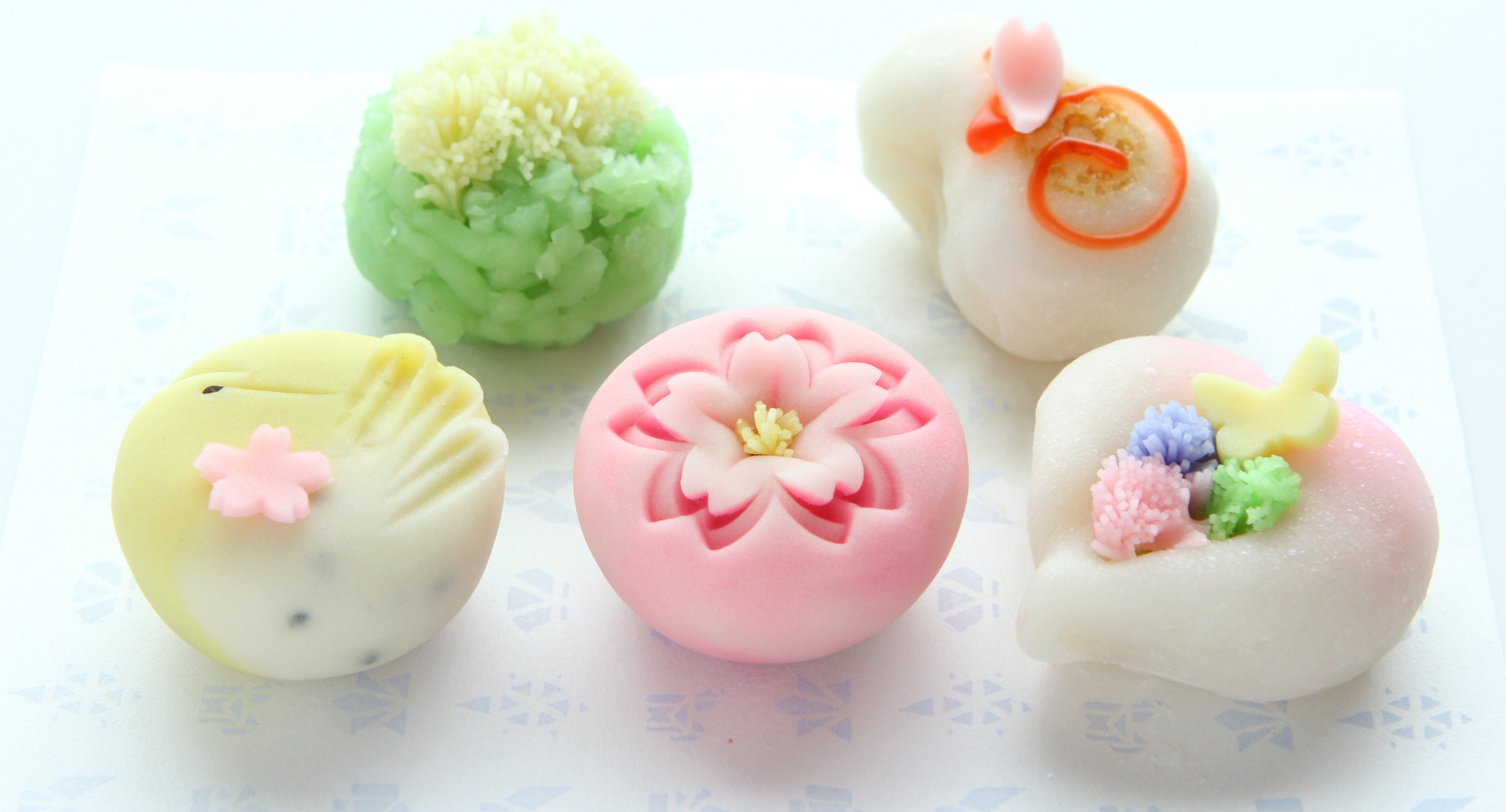
Wagashi, traditional Japanese confections, is an essential in the food culture of Japan and it has a long history. There are many different types of wagashi suitable for different seasons and occasions. I personally recommend these 5 kinds of wagashi you should try!
1. Nerikiri (sweet white bean paste)
This is my favorite! Nerikiri always reflects the season that it’s being served in to embrace the natural flowers, birds and scenery at the time of the year. Different nerikiri are displayed depending on the season. For example, you can buy sakura nerikiri only in spring. I’m always happy when I choose beautiful seasonal wagashi. Nerikiri is often served during tea ceremonies with matcha.

2.”Funawa” Imo Yokan (Sweet Potato Paste)
Originally, yokan was made of red bean paste, but I prefer imo yokan from Funawa, a Japanese sweets shop established in Asakusa in 1902. You can enjoy a subtle sweetness and the flavour of sweet potato. It’s very tasty! I don’t like normal yokan very much, but Funawa’s imo yokan is different. Whenever I go to Asakusa, I pick up a box to take home. There is also a shop in Haneda International airport.

3. Daifuku
Daifuku is a small round mochi stuffed with sweet red bean paste. It comes in many varieties. My favorite is ichigo daifuku, strawberry, and mame daifuku, mixed azuki beans or soybeans in the mochi. In Japan, ichigo daifuku is normally available in April as strawberries are in season during spring. The sweet-sour strawberry and sweet red beans make a great combination of flavours and textures. If you love mochi, try mame daifuku.

4. Mitarashi Dango (Rice dumplings with sweet soy sauce)
Dango, rice dumplings, are a traditional dessert made of rice flour. Mitarashi dango consists of slightly grilled round rice dumplings coated with soy sauce, often served on a skewer. It is a great snack and satisfies your stomach. Compared to other Japanse sweets with bean paste, it’s not so sweet, but it’s tasty. It is generally available at convenience stores and supermarkets. There are also many varieties of dango like anko dango, chadango and black sesame dango.

Photo Credit.
5. Sakura Mochi
As you can guess from the name, sakura mochi is available only during spring. It’s eaten for Japanese Girl’s Day on March 3rd until the end of the month. There are two types of sakura mochi, Kanto (eastern part of Japan) style and Kansai (western part) style. In the photo below, the Kanto style is on the right and the Kansai style is on the left.
The leaves they’re wrapped in are also edible. The leaves are pickled and salty, which balances the sweetness of the red beans and the texture of the pink mochi.

These are all classical Japanese sweets. If you’re interested, join our Wagashi cooking class! Saturday 11 March and Sunday 12 March, email info@washokulovers.com for details!